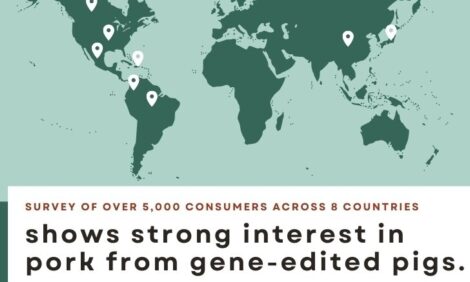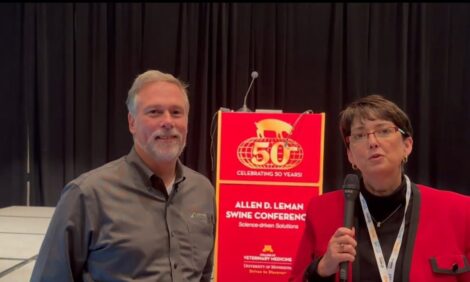



Expression of Kyphosis in Young Pigs Induced by a Reduction of Supplemental Vitamin D in Maternal Diets and Vitamin D, Calcium and Phosphorus in Nursery Diets
By altering vitamin D, calcium and phosphorus concentrations in maternal and nursery diets, researchers at the University of Wisconsin Madison induced kyphosis - an abormal spinal curvature - in young pigs that was similar to that observed in spontaneous outbreaks in afflicted herds.Kyphosis is an idiopathic disease characterised by abnormal, outward spinal curvature, according to University of Wisconsin-Madison researchers, L.A. Rortvedt and T.D. Crenshaw. In a paper published online in Journal of Animal Science, they explain that a spontaneous outbreak and subsidence of kyphosis over a four-month period in the University's Swine Research and Teaching Center herd coincided with an accidental omission of vitamin D3 in one of two premixes used in sow diets.
Their experiment was designed as a controlled study to confirm that vitamin D deletion from the premix used previously in sow diets would induce kyphosis in their offspring.
Crossbred (Landrace × Large White), multiparious sows (n=8) were fed corn-soybean meal diets supplemented with either 325 (+D) or 45 (-D) IU vitamin D3 per kg diet from breeding through lactation. The vitamin D concentrations duplicated formulations of diets fed during the earlier spontaneous outbreak.
At weaning (approximately four weeks), pigs were fed diets devoid of supplemental vitamin D and formulated to supply either 120 per cent (HCaP) or 80 per cent (LCaP) of required calcium and phosphorus concentrations until week 9. At week 9, all pigs were fed the HCaP diet until week 13.
No evidence of kyphosis was observed in pigs at weaning. Pigs produced by -D sows and fed LCaP diets exhibited a 17 per cent incidence (4/23 pigs) of kyphosis at week 9. At week 13, the incidence of kyphosis had increased to 32 per cent (6/19 pigs).
Unexpectedly at week 13, pigs produced by +D sows and fed LCaP diets exhibited a 26 per cent incidence (5/19 pigs) of kyphosis. None of the pigs fed HCaP diets from week 4 to 13 displayed kyphosis, regardless of maternal diets.
Evidence of kyphosis was detected at a younger age if pigs were produced by sows fed -D diets. Whole body and femur bone mineral content determined by dual energy X-ray absorptiometry were lower (P<0.05) in pigs fed LCaP than those fed HCaP diets but pigs produced by -D sows were more severely affected.
Femur-bending moments were lower (P<0.05) in weeks 9 and 13 in pigs fed LCaP than HCaP diets. By week 13, pigs produced by -D sows and fed LCaP diets had reduced (P<0.05) bone mineral density and femur yield bending moment than pigs from +D sows fed LCaP diets.
In conclusion, Rortvedt and Crenshaw report that the 20 to 30 per cent incidence of kyphosis induced by altering vitamin D, calcium and phosphorus concentrations in maternal and nursery diets mimics the incidence observed in spontaneous outbreaks in afflicted herds.
They added that a reproducible vitamin D-induced kyphosis in young pigs offers a suitable model to study the skeletal tissue characteristics, foetal skeletal tissue development and potential treatments for pigs and human patients afflicted by this disease.
Reference
Rortvedt L.A. and Crenshaw T.D. 2012. Expression of kyphosis in young pigs is induced by a reduction of supplemental vitamin D in maternal diets and vitamin D, Ca, and P concentrations in nursery diets. J Anim Sci. 2012 Oct 16. [Epub ahead of print]
Further ReadingYou can view the full report (fee payable) by clicking here.Find out more information on kyphosis by clicking here. |
December 2012






